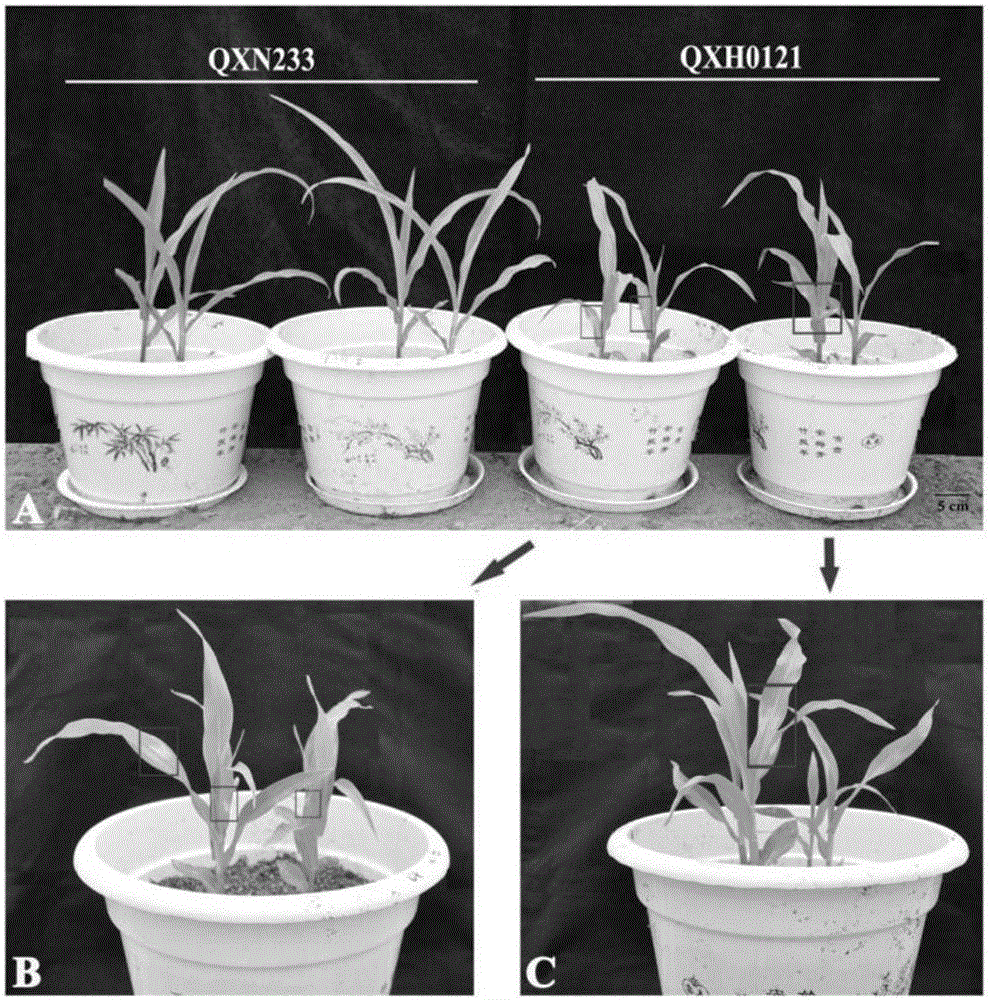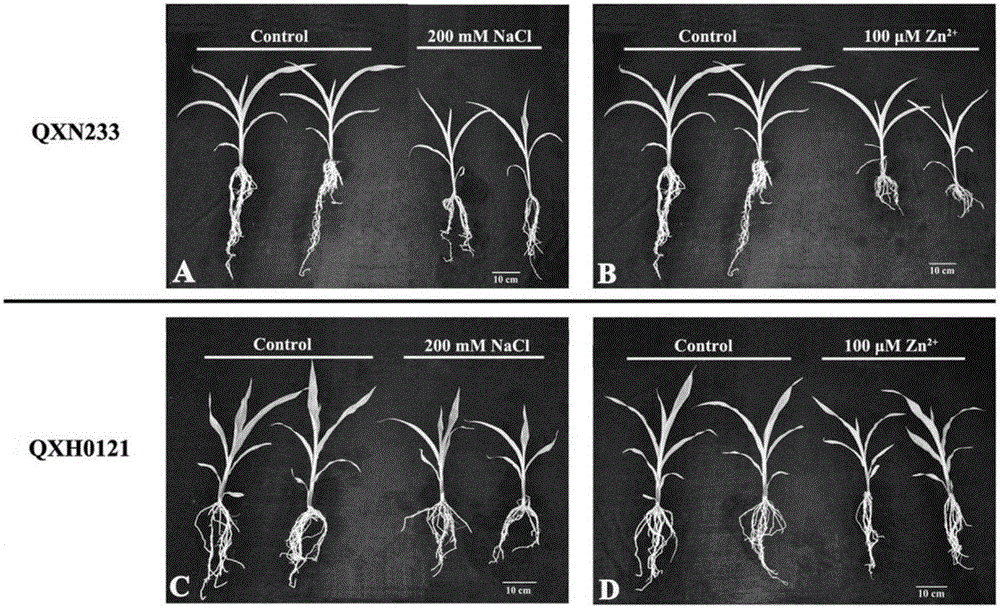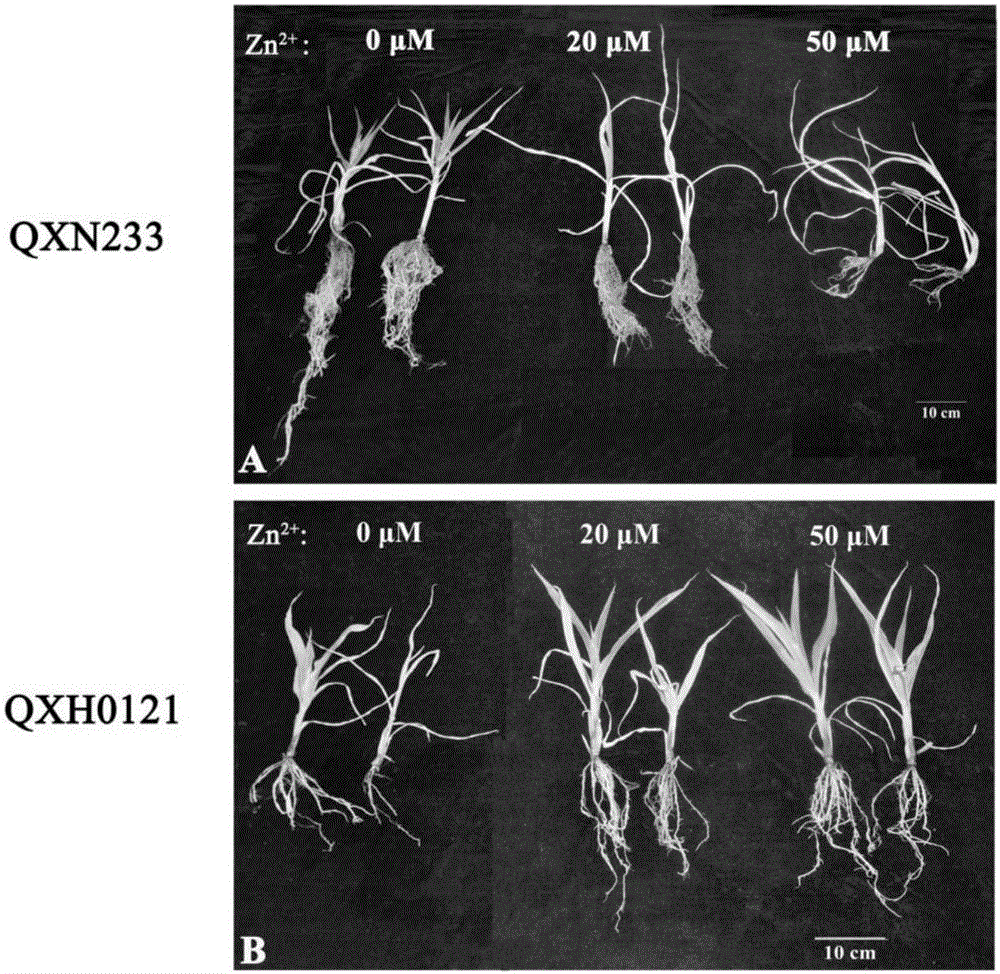Salt tolerance screening and identification method for corn in seedling stage
An identification method and a technology of salt tolerance, which are applied in the field of screening and identification of salt tolerance of seedling corn, and can solve problems such as polluting the environment, high cost of use, and skin burns
- Summary
- Abstract
- Description
- Claims
- Application Information
AI Technical Summary
Problems solved by technology
Method used
Image
Examples
Embodiment 1
[0074] A method for screening and identifying salt tolerance of seedling corn,
[0075] Firstly, the well-germinated and consistent seedlings of 10 maize varieties to be screened and identified (named respectively: 121, 134, 137, 138, 140, 141, 142, 143, Q121, 233) were subjected to normal liquid culture, and the maize seedlings After growing to the three-leaf and one-heart stage, the seedlings of all maize varieties to be screened and identified were treated with 0 μM Zn 2+ After 1 week of treatment, observe the growth characteristics of the seedlings, and judge whether the corn seedlings are salt-tolerant according to whether they have zinc deficiency symptoms, that is, whether the leaves show "white leaves" or white or withered spots on the leaves. The corn seedlings with zinc symptoms are salt-tolerant corn varieties, and the corn seedlings without zinc deficiency symptoms are non-salt-tolerant corn varieties. The observation results are as follows: Figure 11 As shown, Q...
PUM
 Login to View More
Login to View More Abstract
Description
Claims
Application Information
 Login to View More
Login to View More - R&D
- Intellectual Property
- Life Sciences
- Materials
- Tech Scout
- Unparalleled Data Quality
- Higher Quality Content
- 60% Fewer Hallucinations
Browse by: Latest US Patents, China's latest patents, Technical Efficacy Thesaurus, Application Domain, Technology Topic, Popular Technical Reports.
© 2025 PatSnap. All rights reserved.Legal|Privacy policy|Modern Slavery Act Transparency Statement|Sitemap|About US| Contact US: help@patsnap.com



